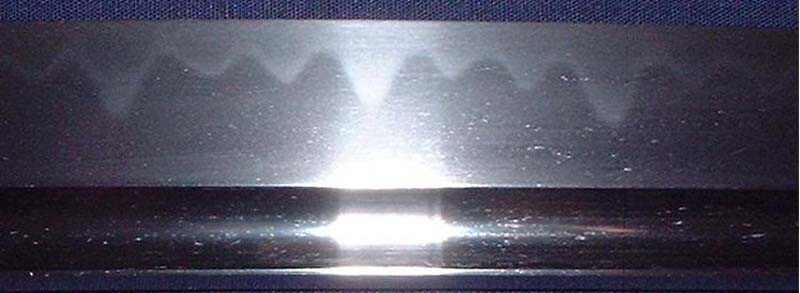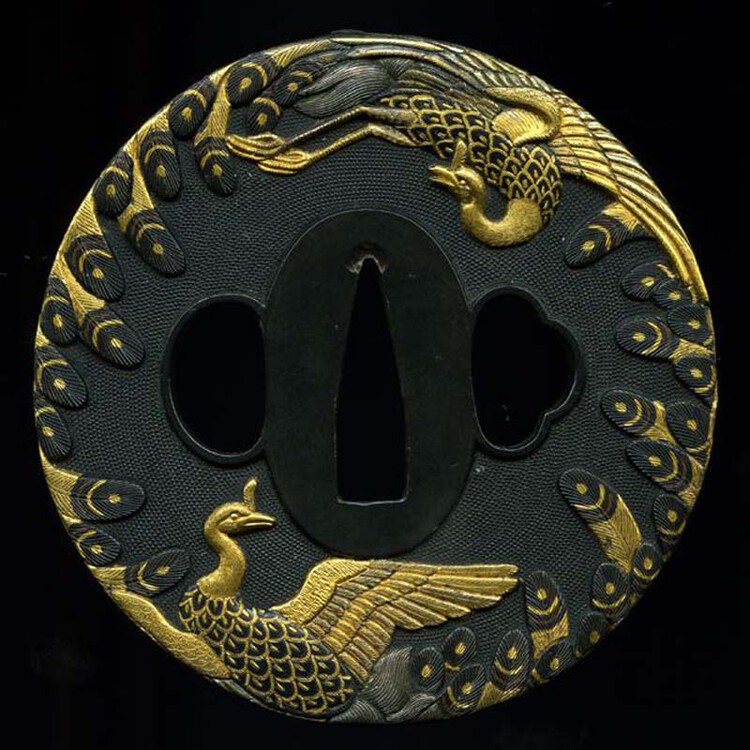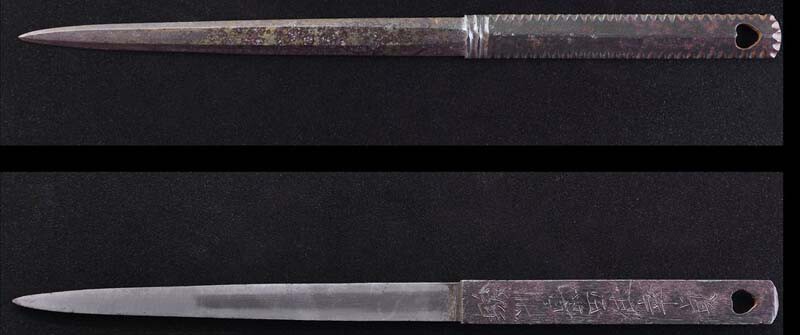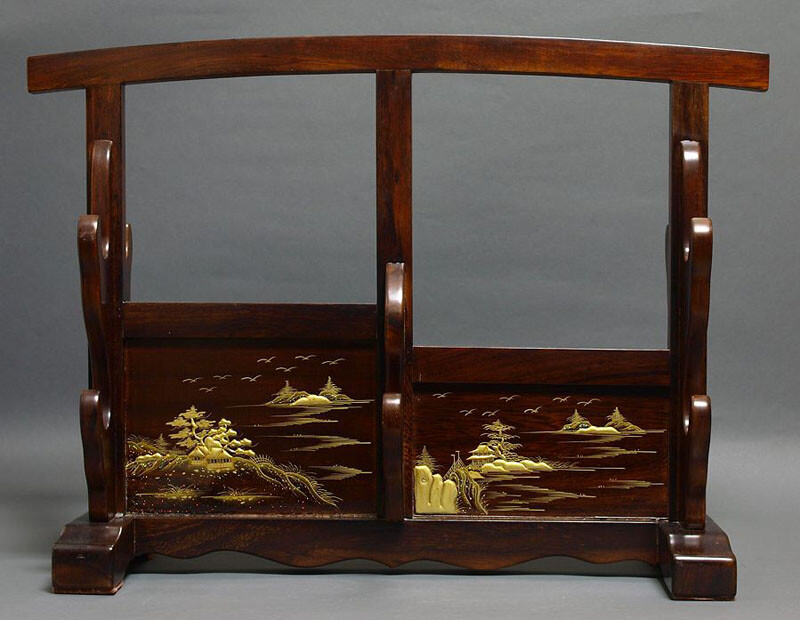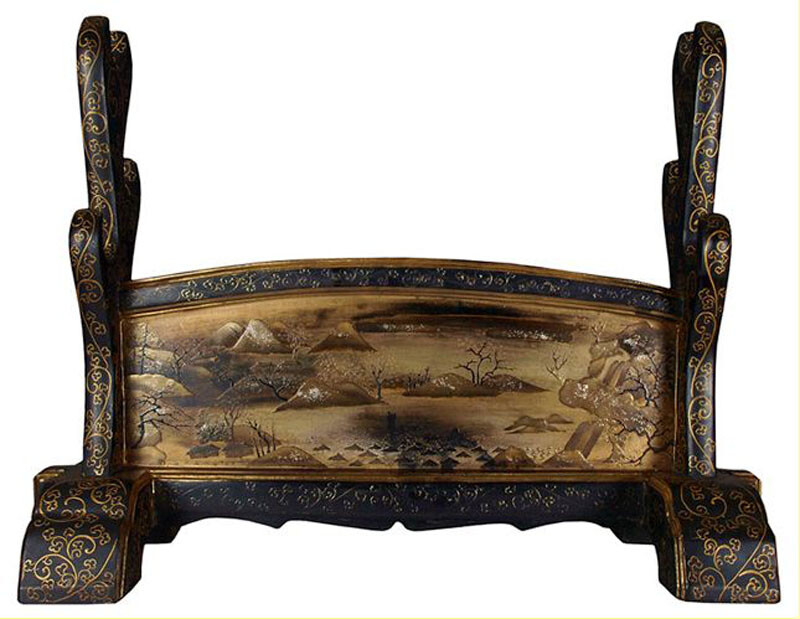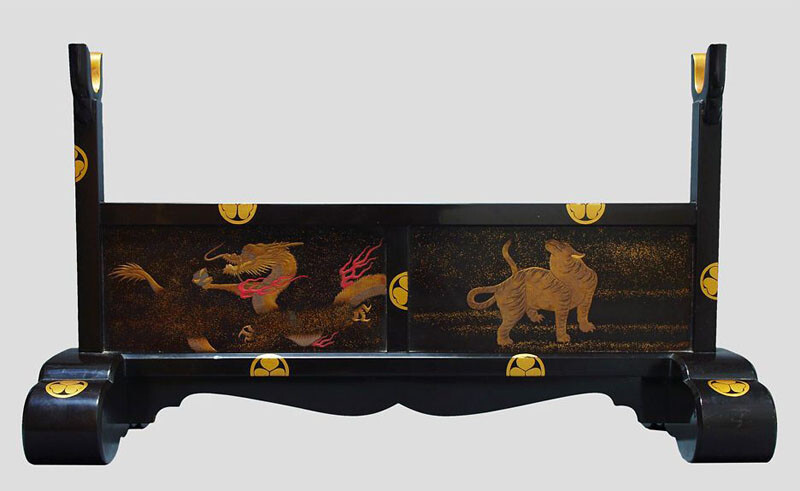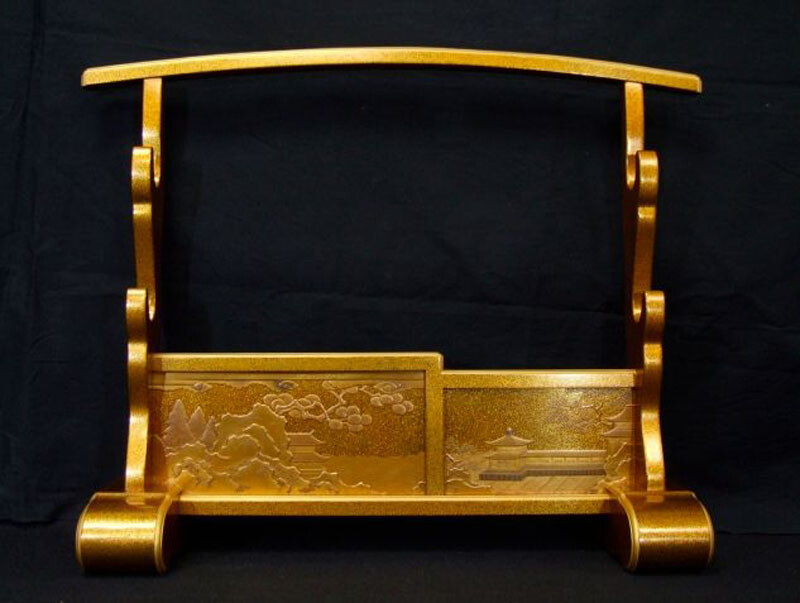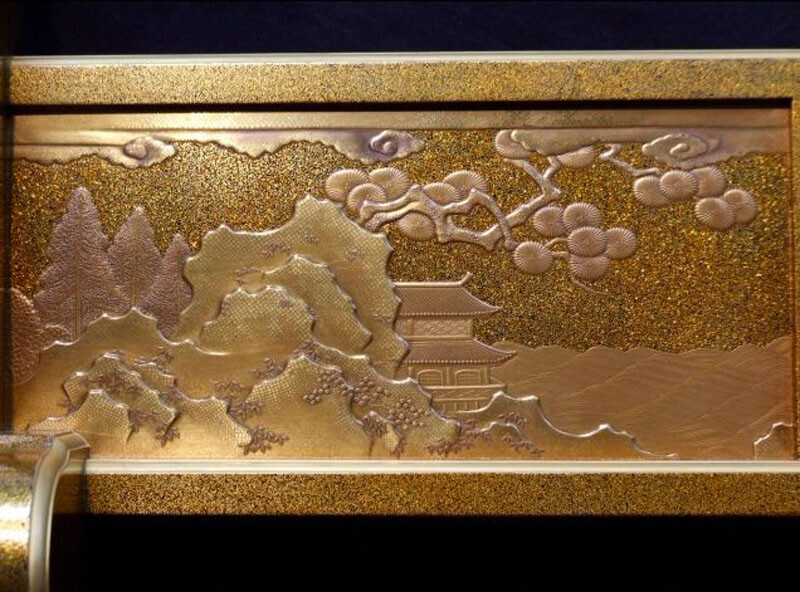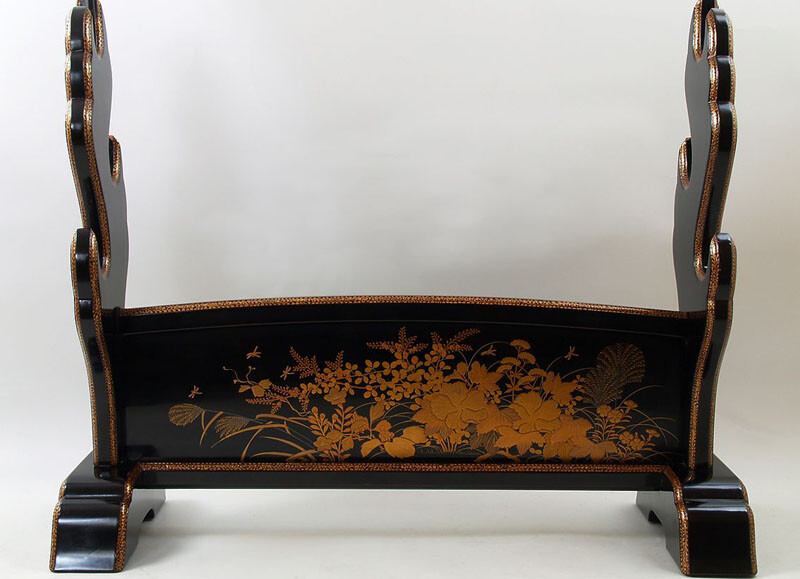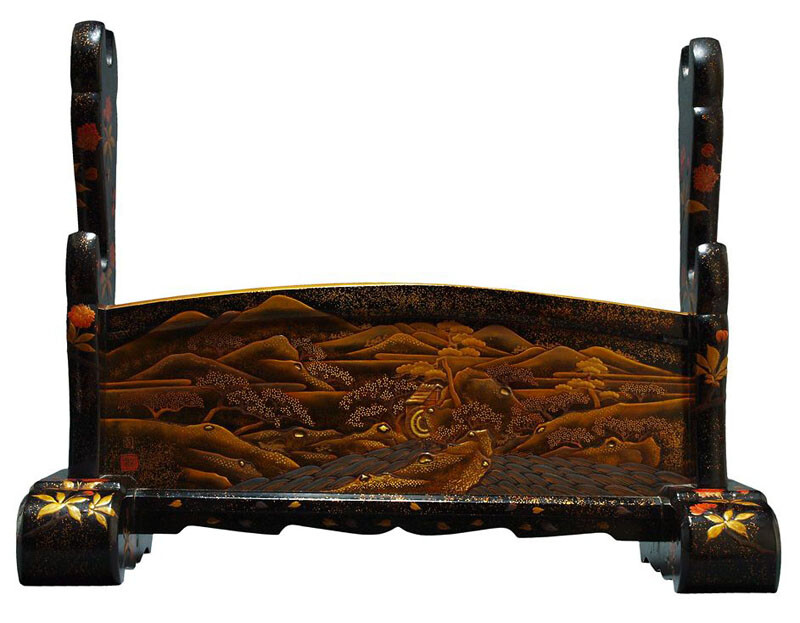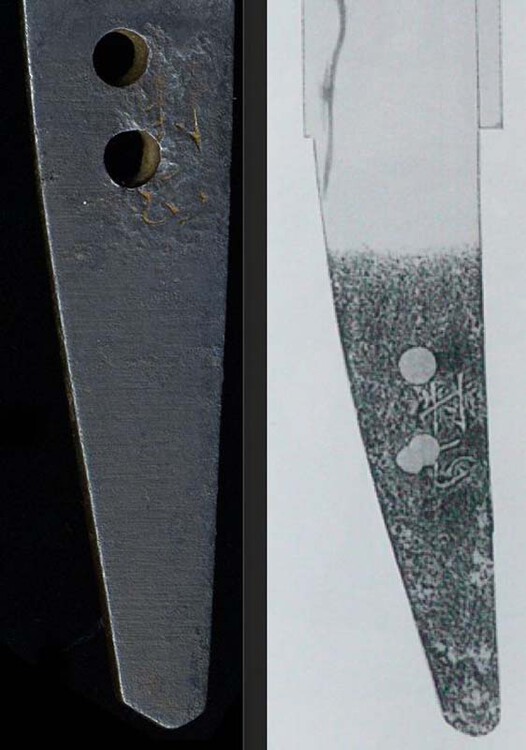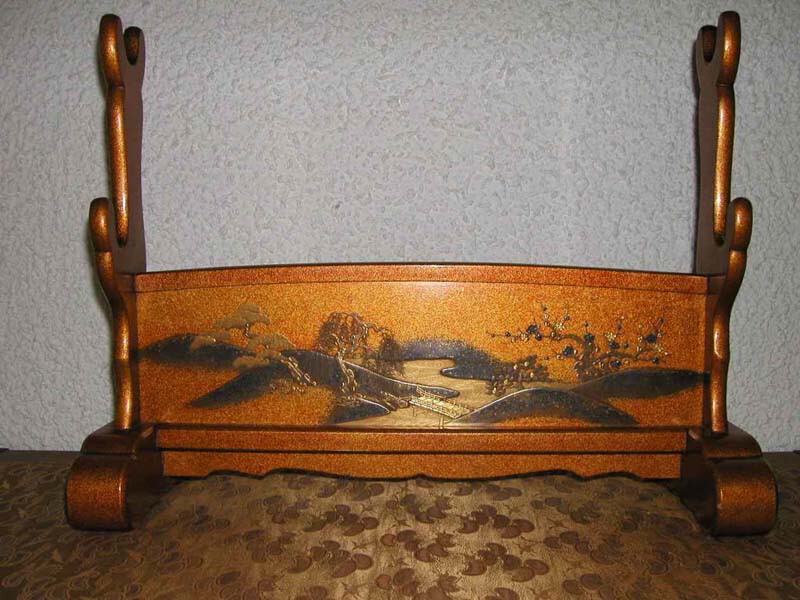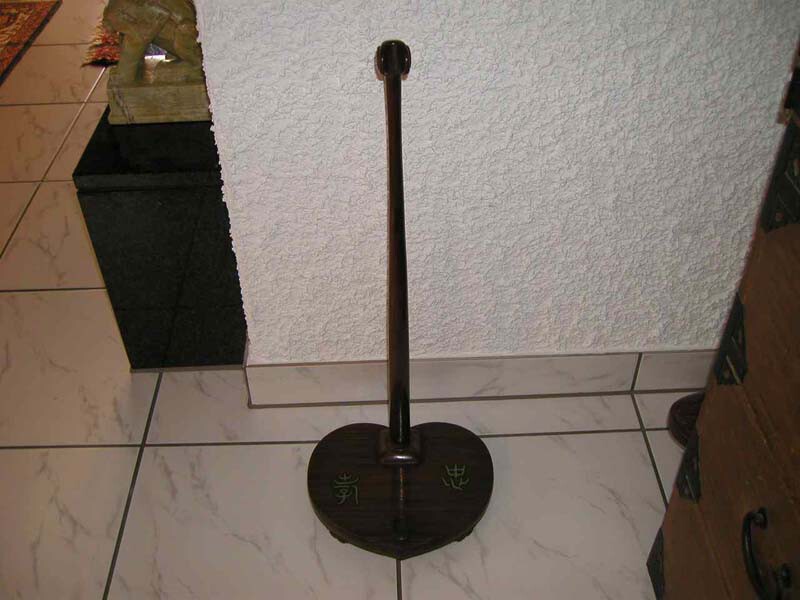-
Posts
1,029 -
Joined
-
Last visited
Content Type
Profiles
Forums
Events
Store
Downloads
Gallery
Everything posted by Eric H
-
Sashikomi polish and Kesho (Hadori) polish on two different swords. The pics show clearly the difference in the polishing procedures. And an explanation by Jon L. Bowhay, Polisher Eric
-

Goto - side school / branches - discussions on difference.
Eric H replied to GARY WORTHAM's topic in Tosogu
This Tsuba was sold with the premise „Daimyo level presentation Tsuba“ by either Kaga or Yoshioka Goto Schools. Eric -
Guess mumei Bungo Masayasu ...correction: Bishu Masayasu Eric
-
I haven‘t followed this -finally- interesting topic because the initial pics of a badly rusted sword were not of interest for me. However this as seen was an attitude of bias...I have never thought a sword in that state would show such a satisfactory result like this after a polish The motif that I enter belated in this discussion is the following: Many years ago, together with German collectors, we used to send swords for polish to Japan, to Kasuga Art Center Ltd., Kobe. There was a total of 21 swords and Kasuga wrote: „Please be advised that we are going to do „Better Polish“ on most swords except for 2 items we are going to do „Best Polish“, Kiyondo and Tadahiro, because these items are extremely fine in make“ and for another two items we have estimated the charge on the basis of „Ordinary Polish“ All swords went to shinsa. Two of them were disqualified, a Norishige Katana of mine, with the remark: „it would most probably „Green Paper“ pass if did not carry a signature because it is fine in make“. The Kiyondo and the Tadahiro got „green paper“, 17 white paper, 2 disqualified. That said, as one can see, a sword gets the polish in Japan depending on its quality...at that time anyway. Eric
-
This Bashin/Kankyuto was recently offered by Aoi. All the pics I have seen of these tools have a bar end other than that of a kogai. But is the hitsu ana of this Tsuba suited i.e. big enough for this kind of Bashin/Kankyuto? Total length: 22.4 cm Blade length: 13.2 cm Width of hamachi: 1.09 cm Eric
-

Big exhibition in Paris
Eric H replied to Jean's topic in Sword Shows, Events, Community News and Legislation Issues
Yes, it's a feast for the eyes Eric -
To note is the obvious less quality of the gold lacquer on the contemporary wooden sword stand compared to the antique ones. As an example of bad taste is the second one, also a contemporary Kake. Eric
-
Exactly... :lol: Herewith a variety of Kakes of different qualities of the lacquer work. The second pic exhibit clearly takamaki-e (high relief) on nashiji-nuri. Eric
-
-
Lorenzo, what a pity!, the habaki suggests a superior class sword. Eric
-

A very beautiful short film - Embu.
Eric H replied to CurtisR's topic in General Nihonto Related Discussion
Thank you for sharing Eric -
These are high grade lacquer works. Is the second Kake with the sword and koshirae yours? Eric
-

Some interesting sword related photos
Eric H replied to Sporkkaji's topic in Military Swords of Japan
-
An unusual collapsible Kake for two swords, the rests positioned on both sides. There are on the roiro-nuri Aoi mon in hiramaki-e (low lacquer design) as well in togidashi (completely flush with the ground) but I cannot make out neither takamaki-e (high relief lacquer) nor nashiji (pear-skin) -nuri...possibly the third mon from left on the front side. Eric
-

need help with tang translation on both sides
Eric H replied to Petersan's topic in Translation Assistance
HAWLEY MASAMORI - Awa - 1789 - 8 - Stud. of Masahide Ashu Iwakura ju Masamori. Name - Ishikawa Kohei Eric -
1 - Handwriting by Yoshida Shoin 2 - Part of Kakejiku by Yoshida Shoin 3 - Seals - to compare anyway an attractive kakejiku Eric
-
Of course I have noticed the modification. I add pictures of a cup I have bought some years ago to make a present to my daughter. These cups were used for: http://inventorspot.com/articles/japans ... cups_24672 Eric
-
It is the Goshichi no Kiri mon http://en.wikipedia.org/wiki/File:Goshichi_no_kiri.svg Eric
-
-
Although not specifically mentioned, this Aoi-Tanto, based on the overall workmanship and the partially legible mei is a work by Muramasa II, the nidai. As to the last Oshigata I had placed, it‘s also the nidai. So I was on the same track as Jean and Brian. The original comment on the last Oshigata by Honma Junji: This is a typical mei inscription of Nidai Muramasa. Generally speaking, the hamon tempered in an identical layout on both sides is a trait found in common in all Muramasa works regardless of generations. The hamon above the monouchi in this example, however is not necessarily typical of this smith; on the contrary, it should be considered exeptional. Further a Nakago with mei of the Shodai Muramasa Eric
-
Keith...OK I hope this thread continues Eric
-
Well I spoke from Samurais who were wealthy, this narrows down to higher ranking Samurais. More than 250 Daimyates with all their vassals, a respectable number...it is not the issue of merchants...what should they do with a Kake for Daisho. When appreciating an art object, f.e. a sword stand exclusively made for 2 swords, a Daisho...look carefully at the Koshirae, the Kake, assumed the latter is worth to be appreciated, and then the whole, how it harmonises. And then make up your mind. To downgrade high quality lacquered sword stands in globo as garish is incomprehensible. Why do you not show your Kakes?...at best a Daisho-Kake with a Daisho upon it. respectfully Eric
-
The insinuation of bad taste touches firstly those highly qualified lacquer artists who made outstanding kakes...for whom?...for Samurai who would appreciate them and could afford them... and secondly to „Westerners“ who suffer equally in bad taste. A fine Daisho on a finely lacquered Daishokake is as a tribute to the swords on it. Imagine a feastful dressed man with Smoking... but barefoot. There are Westerners trapped in prejudices trying to enlighten people. If „true sword connoisseurship“ is reduced to simple „black or white“ then I whistle on this connoisseurship. When a sword is placed on its rack, the sageo should be wound neatly round the scabbard at the kurikata. The colouring of the sageo corresponds to that of the scabbard to which it is attached; if the latter is in good Japanese taste, quiet and sober, the sageo will be similar, but gaudy and variegated braid is often found on a flashily mounted weapon. The sword-rack should if possible, contrast in colour and decoration with the sword placed upon it. (by a knowledgeable Author) Eric
-
Everyone to his taste!... The connoisseur is well prepared to differentiate between a high quality lacqerwork and a poor one...and to appreciate the one (Kake) and the other (Koshirae) Eric



